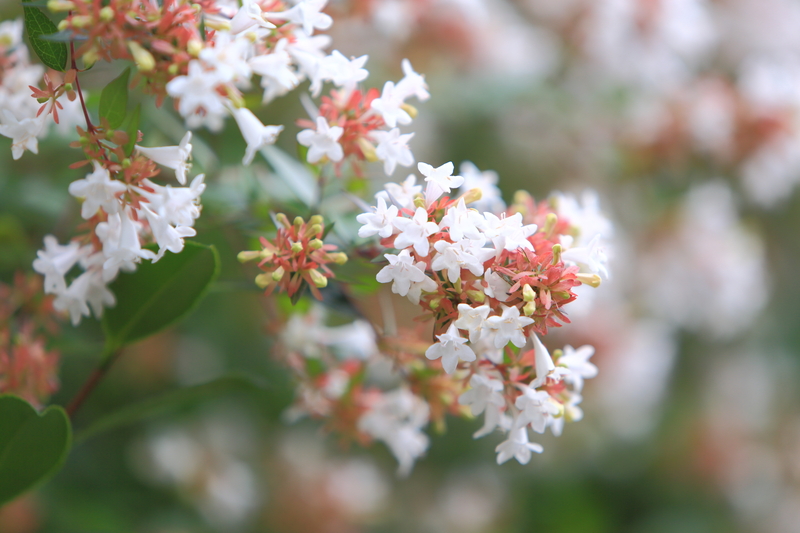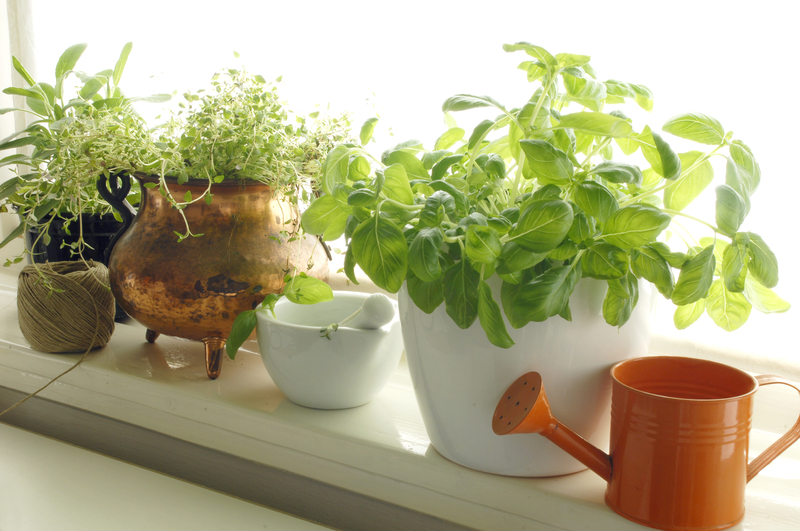Vertical gardening: redefining urban horticulture
Posted on 25/06/2025
Vertical Gardening: Redefining Urban Horticulture
Vertical gardening is transforming the way city dwellers interact with nature. As urban spaces become more crowded and land availability decreases, innovative solutions such as vertical horticulture are helping to bring lush greenery into the concrete jungle. This comprehensive guide explores how vertical gardens are redefining urban horticulture, their benefits, how to start your own, and their profound impact on city landscapes.

What Is Vertical Gardening?
Vertical gardening is the practice of growing plants on vertically suspended panels or structures rather than traditional horizontal surfaces. This can range from living walls in homes and offices to large installations on skyscraper exteriors. This innovative method makes it possible to grow lush gardens even when ground space is limited.
Key Features of Urban Vertical Gardens
- Space Efficiency: Utilizing vertical surfaces maximizes available growing area.
- Versatility: Suitable for indoor and outdoor environments.
- Diverse Plant Selection: Supports a wide variety of species, from edibles to ornamentals.
- Customization: Designs can be tailored to aesthetic or functional needs.
Why Vertical Gardening Is Reimagining Urban Horticulture
As cities expand vertically, so must our horticultural methods. Vertical gardening in urban environments introduces sustainable, beautiful, and efficient ways to re-green our living spaces.
Core Benefits of Urban Vertical Gardens
- Maximizes Limited Space: Makes gardening possible on apartment balconies, walls, and rooftops.
- Improves Air Quality: Plants filter pollutants and increase oxygen levels.
- Reduces Heat: Vertical gardens help regulate building temperatures and decrease urban heat islands.
- Encourages Biodiversity: Attracts pollinators and creates habitats even in highly built-up areas.
- Enhances Well-being: Access to greenery improves mental health and increases productivity.
- Reduces Noise: Living walls can dampen and absorb city noise for a quieter environment.
Types of Vertical Gardens in Urban Settings
Urban vertical gardening solutions are designed for a variety of spaces and functional needs. Here are the most popular types:
Living Walls and Green Walls
Living walls are large-scale installations featuring arrays of plants grown on specially designed panels or hydroponic systems. They can cover whole building facades or serve as dramatic interior features.
Vertical Planters and Pocket Gardens
These are modular panels with individual pockets for soil and plants, which can be easily attached to fences, balconies, or sunlit indoor spaces. They're ideal for herbs, succulents, or flowering plants.
Hydroponic and Aeroponic Towers
Hydroponic vertical gardening uses nutrient-rich water rather than soil, enabling fast growth and efficient use of resources. Aeroponic towers, meanwhile, mist plant roots with nutrients and water, using even less space.
Trellises and Espaliers
Utilizing vertical supports, vining plants like tomatoes, beans, and even fruit trees can be trained to grow upwards, creating a living tapestry along walls or fences.
How to Start a Vertical Garden at Home
Whether you have a tiny balcony, a small backyard, or even just a blank wall, starting your own vertical garden can be both rewarding and practical. Here's a step-by-step guide:
Step 1: Assess Your Space
- Choose a wall, balcony, fence, or even an indoor corner with sufficient sunlight or lighting.
- Measure the area to determine the size and type of vertical garden you can install.
Step 2: Decide on a Structure or System
- Simple DIY options: Wall-mounted pots, hanging planters, or upcycled pallets.
- Modular systems: Ready-made panels, felt pockets, or hydroponic towers.
- Custom-built frames or trellises for more permanent installations.
Step 3: Choose Your Plants
- Edibles: Lettuce, herbs, strawberries, small peppers, or tomatoes.
- Ornamentals: Ferns, succulents, ivies, or flowering annuals.
- Air-purifying plants: Spider plants, pothos, peace lilies for indoor systems.
Step 4: Install Irrigation and Maintenance Systems
- Automated drip irrigation is ideal for larger or hard-to-reach installations.
- Ensure proper drainage to prevent root rot.
- Fertilize and prune regularly to promote healthy growth.
Step 5: Monitor and Enjoy
- Check for pests, nutrient deficiencies, or overwatering.
- Harvest and replant as needed for continuous greenery and produce.
Best Plants for Vertical Gardening
Vertical horticulture is ideal for certain plants due to growth habits and maintenance needs. Choosing the right species ensures a lush, healthy living wall.
Top Choices for Urban Vertical Gardens
- Succulents: Low-maintenance and visually stunning.
- Herbs: Basil, thyme, mint, oregano, and parsley thrive in small pockets.
- Ferns and Mosses: Perfect for creating soft, dense foliage walls with minimal light.
- Leafy Vegetables: Lettuces, spinach, and kale grow well vertically with regular harvesting.
- Flowering Annuals: Impatiens, petunias, and nasturtiums add vibrant splashes of color.
- Vining Plants: Beans, peas, cucumbers, and morning glory are natural climbers well-suited for trellises.
Environmental Impact of Vertical Gardening in Cities
Vertical gardening innovation goes beyond aesthetic improvements; it has a measurable positive impact on the environment in densely populated areas.
Reducing Urban Heat Islands
- Green walls insulate buildings, lower surrounding temperatures, and combat heat absorption from concrete and glass.
- This leads to reduced energy usage for air conditioning.
Improving Air and Sound Quality
- Plants capture dust, filter out harmful pollutants, and produce oxygen, contributing to healthier cities.
- Dense foliage barriers absorb and deflect street and traffic noise for more peaceful interiors.
Conserving Water and Resources
- Hydroponic vertical systems use up to 90% less water than traditional soil gardening.
- Modular gardens can optimize fertilizer and minimize waste.
Boosting Urban Biodiversity
- Vertical gardens can host a range of pollinators and beneficial insects, creating micro-ecosystems in the heart of the city.
Vertical Gardening and Community Well-being
Incorporating vertical gardens in urban spaces isn't just about greening up aesthetically--these installations are proven to boost community health and foster social interaction.
Therapeutic and Social Benefits
- Green spaces reduce stress, anxiety, and depressive symptoms.
- They encourage public interaction, community gardening, and outdoor learning in dense urban neighborhoods.
- Urban agriculture initiatives can help address food insecurity by providing fresh produce in food deserts.
Innovative Examples of Vertical Gardening Worldwide
Cities across the globe are embracing vertical horticulture as part of sustainability initiatives and urban regeneration programs. Here are some inspiring examples:
Bosco Verticale, Milan
The Bosco Verticale, or "Vertical Forest," is a pair of residential towers outfitted with over 900 trees and 20,000 plants. These living facades not only beautify Milan's skyline but also absorb CO2 and produce oxygen.
One Central Park, Sydney
This innovative high-rise features the world's tallest vertical garden, covering more than 1,000 square meters with cascading greenery and flowers, reducing the building's carbon footprint and energy needs.
Singapore: City in a Garden
Singapore leads the world in integrating vertical gardens into public infrastructure. From highway sound barriers cloaked in vines to the stunning Supertree Grove at Gardens by the Bay, the city has fully embraced urban vertical horticulture.
Challenges and Considerations with Urban Vertical Gardens
While vertical gardening in urban environments offers numerous rewards, it also comes with unique challenges:
- Initial Costs: Structural supports, automated irrigation, and quality materials can be expensive upfront.
- Maintenance: Living walls need regular watering, pruning, and monitoring for pests.
- Plant Selection: Choosing species suitable for the orientation and microclimate is crucial for success.
- Structural Load: Walls and supports must safely bear the weight of wet soil and mature plants.
- Water Management: Good drainage systems are essential to avoid seepage and water damage to buildings.

The Future of Vertical Gardening & Urban Horticulture
As cities strive toward sustainability, the role of vertical gardening and vertical horticulture will only increase. With advancing technology, living walls are evolving to use smart sensors, AI-driven irrigation, and even solar-powered systems. Schools, businesses, and municipal planners are all integrating vertical gardens into the urban fabric, paving the way for resilient, green, and healthy cities of the future.
Key Predictions and Trends
- Widespread Adoption: Expect to see more living walls in offices, schools, hospitals, and mass transit areas.
- Integrated Urban Farming: Vertical farms will help cities produce their own food year-round, reducing transportation emissions and food waste.
- Smart Green Infrastructure: Digital monitoring and sustainable materials will enable low-maintenance, high-impact installations.
Conclusion: Embracing Vertical Gardens for Urban Renewal
Vertical gardening is more than a trend--it's a paradigm shift in urban horticulture. By making the most of vertical spaces, city residents can create lush, productive, and healthful environments that benefit individuals and communities alike. Whether you dream of a pocket-sized herb garden or an entire living wall, vertical gardening offers an exciting, eco-friendly path to transforming our cities, one wall at a time.
By investing in vertical gardening solutions, you not only beautify your surroundings but also contribute to a sustainable and resilient urban future. Now is the perfect time to go vertical and join the green revolution!



